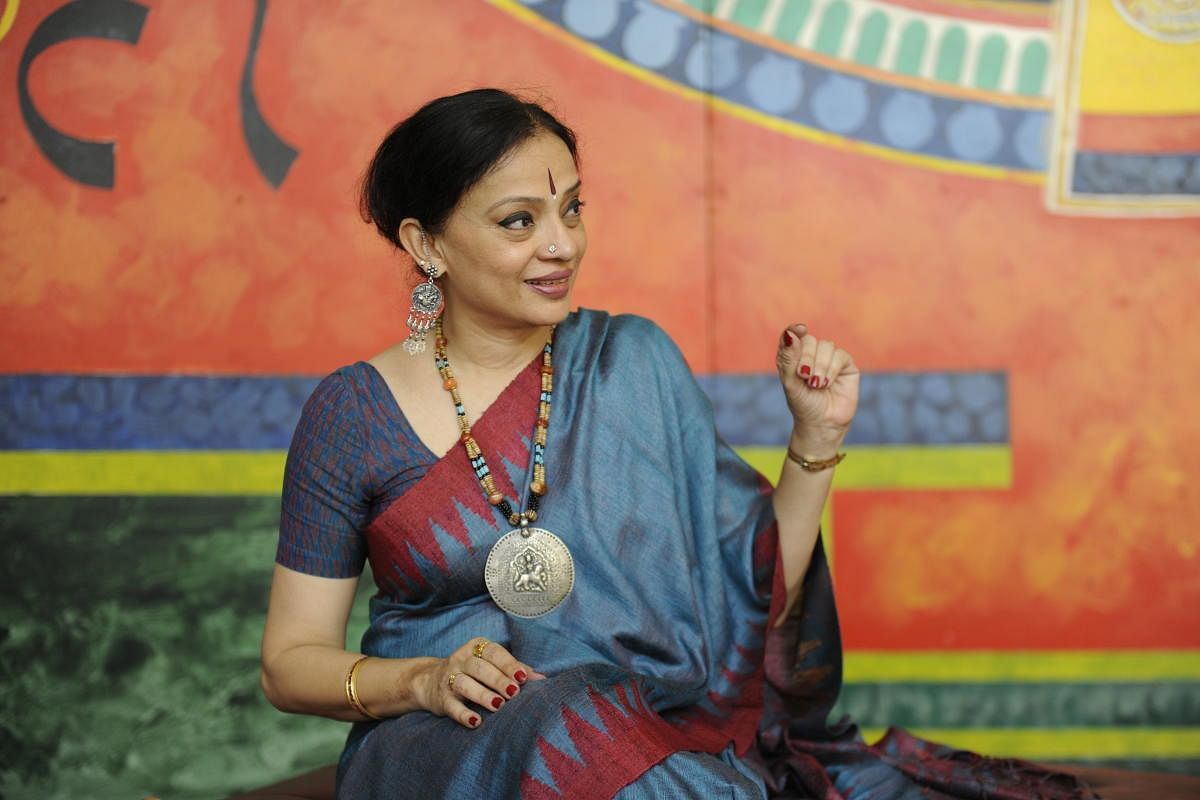
It is easy to recognise thoughts and terminology that come from a lived experience. They are simple, succinct, and saturated with meaning and they stay with you. A conversation on the choreographic process in dance, with veteran artist Malavika Sarukkai, had every thought and every other word resonating with intent and experience.
Her art has truly stayed and stood the test of time, transitions and trends in the world of dance, etching a 50-year-long journey.
Sarukkai spoke unhurriedly on the importance of tuning in to one’s body constantly to be able to receive the creative process of choreography and landed on the phrase “searching in the heart with the intellect”. “That is what choreography is to me,” she said.
We started the discussion with what the choreographic process is not, to get to what it is.
“It is not just physical, limited to just the technique and alphabet of dance, leaving us to think of dance as an external and athletic feat. It is not an artistic indulgence. It is not just that one spark or idea. For choreography to take root and stabilise, a concept is critical. Choreography is beyond the visible manifestation,” Sarukkai explained.
Excerpts from an interview
How does one add depth, coherence, and strength once the initial spark of creativity strikes, or a concept has been arrived at?
Every concept or idea might not directly translate. The idea must germinate and then be filtered down. There could be many influences that lead to a concept. The concept is not a single point, but the whole space that it inhabits.
Reading and research shape the concept. Reading may propel one towards the concept or lead one away from a certain direction or choice. It takes incisive discussions, deliberate choices, structuring and creative detailing.
What are some obstacles or momentary traps in the choreographic process that one needs to overcome?
There is the intimidation of a blank page when creating new work. It may be overcome through deliberate discussions with people that you trust or by struggling with it yourself, to see what your body intelligence tells you.
Falling back on habit is a disaster zone. It traps you. It defines you. To qualify that, there could be moments that come from habit, that register an identity, a Baani for example. But if habit becomes the only way you think, then it traps you.
Where do the iterations or additions stop?
You need to dance and assess for yourself. When you dance and inhabit it, at some point, it feels full, saturated, and ready.
What has been the experience of working through the pandemic on ‘Anubandh’, your most recent production that premiered earlier this year? What are your observations on your thought process before and after the pandemic?
I observe that it has essentially moved from finding the self to finding the other. My last production before the pandemic, ‘The Battle Within’, was about the search for the self. It was from one text, with just two characters, Arjuna and Krishna. Anubandh is not monolithic, but inclusive, with many texts, languages, voices, and landscapes.
It is expansive in emotions — conflict, disparity, loneliness, trepidation, anxiety and finally, hope. Every time I perform it, I feel like I have lived through a whole lifetime.
These two years of the pandemic have compelled me to go back and be a student of dance. They have made me observe the world and ask some stark questions. However, dance is not an escape; maybe it is but a moment of hope!
How do you see your 50-year journey in terms of the choreographic process? How has the continuum evolved and what are some of your long-standing inspirations and influences?
It has been a journey from the individual to the collective. Starting with something closest to me, ‘Shringara’, the inspirations and influences have been many. Places that I have travelled to have spoken to me.
For example, the sanctum of Varanasi symbolised the idea of many paths leading to one. Trees have been a constant inspiration. They are something I believe I coexist with.
Over the years, what I dance had to become a language that I had to own. We need to hold our tradition with respect, but question if it is okay to circumscribe to a certain dogma and not explore.
The need to question the approach is not to only be rebellious, but to create a healthy eco-system. When you take a Margam and create it with fresh energy, it stays relevant and stays alive.
‘Fireflies’ in 1990 was my first step out of the Margam. It was my first work that moved away from the familiar and was influenced by miniature paintings.
Maybe ‘Fireflies’ is a metaphor for my journey, with the lantern, in search of the path.
There is a certain resonance in words that comes from living one’s truth. This was evident when Sarukkai spoke of the dancing body as the site of inheritance and how the constant process of fine-tuning it as an instrument, becomes a living preoccupation.